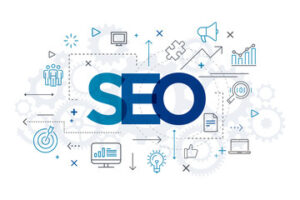Backlinks are one of the main factors Google takes into account when ranking websites. They provide credibility and authority and improve brand value.

Ideally, backlinks should be relevant and unique. Moreover, they should come from high-authority sources. The referring page should also address your industry or niche. Read on Billboards In Houston for more information.
A great way to get a backlink is to reach out to other bloggers who have written about the same topic. This creates a win-win situation for both parties.
High-quality content is the key to a successful online marketing campaign, whether it’s designed to attract backlinks or engage your audience. It can help you achieve your marketing goals by increasing website traffic and driving sales or generating leads. In addition, quality content can establish your brand as an expert in your industry and increase your credibility and authority.
However, what makes a piece of content “high-quality” can vary from one marketer to the next. While some may say it’s about the perfect grammar or having the most SEO-optimized content possible, others say it’s about creating engaging and relevant information that adds value to your readers. In reality, the best content on the internet shares a few key traits that make it effective and valuable to its readers.
The first and most important aspect of high-quality content is that it’s helpful to the reader. This means that it answers their questions or solves their problems in a concise and clear way. It also avoids using jargon or technical terms and uses visual elements to break up walls of text. It is also organized in a logical and easy-to-follow manner, with clearly defined sections and headings.
Finally, high-quality content is accurate and reliable. This is essential because Google’s automated ranking systems are designed to provide genuine value to searchers by presenting useful, trustworthy information in the top search results. In addition, quality content is designed to keep the reader engaged and happy with their experience on your site.
As you can see, creating high-quality content takes time and effort. But it’s worth the effort if you want to earn high-quality backlinks and increase your search engine visibility.
Relevance
When it comes to backlinking, relevance is a key factor that influences rankings. Relevance refers to how well a website’s content matches searcher intent. This is a core component of Google’s ranking algorithm. It ensures that relevant results are displayed in SERPs, promoting websites and increasing their visibility. It also helps Google determine the quality of a site and its content.
To improve your SEO strategy, focus on securing backlinks that are relevant to your industry or niche. These links are a form of endorsement from authoritative sources and boost your credibility. Additionally, they help you attract a targeted audience, improving the likelihood of conversions. To gauge the relevance of your backlinks, use tools such as Ahrefs or SEMrush. These tools will provide a list of the sites linking to your website and review their domain authority, Page Authority, and Citation Flow metrics.
One of the biggest challenges in gauging relevance is that not all backlinks are created equal. In a perfect world, each link would be perfectly aligned with your niche and have high trustworthiness. However, this is not always possible, especially since SEO is a competitive sport. To increase your chances of securing relevant backlinks, focus on securing links from authoritative sources that are related to your industry or niche.
For example, if you run a Dallas water damage restoration company, your local backlinks might be predominantly from other local businesses. However, if you expand your search to include a national scope, you might discover an informative blog post on preparing homes for rainy weather that includes tips on cleaning up and restoring mold damage. This is a piece of relevant content that could be worth your business’s time to pursue.
Authority
Domain authority (DA) is an indicator of how well a website is likely to rank on search engine results pages. The metric is determined by using technical SEO tools. However, different tools use different metrics to determine a domain’s authority. The more quality backlinks a site has, the higher its DA will be. A high DA indicates that the website is popular and can be trusted. It also means that its content is relevant. The number of unique links also influences a domain’s DA.
The DA of a webpage is calculated by comparing it to the DA of other websites. This helps search engines decide which webpages are most authoritative. A page with a higher DA is more likely to appear in the top of the search results. However, a page with a lower DA may still have valuable information that can help people find what they are looking for.
Link authority is important for SEO because it is a predictor of how well a website will perform in the search engine results pages (SERPs). However, you must not focus solely on building backlinks to increase your DA. Instead, spend time creating high-quality content that your audience will enjoy and share.
Increasing your DA isn’t easy, but there are some steps you can take to improve it. First, you need to understand what it means and how it is calculated. Then, you can apply these concepts to your own marketing strategy.
To maximize your DA, you should build links from pages with high domain authority. These are pages that have lots of incoming links from other authoritative sites on the topic. For example, if another plumbing website links to your page about plumbing, then that’s a good sign that your page is trustworthy. In addition, you should avoid links from spammy or low-quality websites.
Link building
When it comes to ranking websites in search engines, link building is one of the most important factors. It’s a key part of SEO (search engine optimization) because it signals to Google that your site is a quality resource worthy of citation. This helps you rank higher in the search results, which drives more traffic to your website.
You can build links to your own website by adding them manually or by asking for them. Asking for links is a more difficult way to build links because you need to reach out to people and convince them that it’s in their best interest to link to your content. This is why it’s important to offer something valuable to them in return. For example, you could offer to write a guest post or create a new tool that they can use.
However, it’s important to keep in mind that not all links are created equal. It’s also important to know the difference between Domain Authority and Brand Authority. While both are important, the latter is more indicative of a brand’s reputation and recognition. Moreover, it’s more likely to influence your rankings than the former.
Ultimately, you want to focus on acquiring backlinks from sites that are relevant to your niche. You can use tools like Ahrefs and Semrush to find high-quality prospects (websites that might link to you). After identifying these websites, you can start reaching out to them.
Be sure to reject any links from untrustworthy or spammy websites. This will help you avoid a penalty from Google and keep your rankings safe. Fortunately, Google has made it easy to remove bad backlinks from your site. You can do this by submitting a disavowal request on the Google Search Console.
Tracking
Tracking is an important aspect of backlinking because it allows you to measure the impact that your campaign has on your website’s rankings. By identifying which backlinks have the most impact on your SEO performance, you can focus your efforts on these links to improve your ranking. It also helps you see the results of your backlinking strategy and determine if it is working.
The quality of a backlink depends on several factors, including its domain authority (DA) and page content length. Ideally, a link should come from a website with a high DA score. This will help your page rank higher in search engine results pages (SERPs). However, it is important to note that a high DA score doesn’t necessarily mean a high-quality link.
In addition to domain authority, it’s also important to pay attention to the amount of monthly organic traffic a website receives, its customer reviews, and its relevance to your topic. The more relevant a backlink is, the better it will be for your website. Lastly, you should avoid linking to websites that have broken links or spammy content, as this can negatively affect your page’s ranking.
A backlink is a hyperlink from one web resource to another web resource. In order to achieve a high SERP ranking, it is important to have a strong backlinking strategy. Having a good ranking on search engines will increase the number of website visitors and boost your business’s visibility. This is because the top-ranked websites get more organic traffic than the bottom-ranked ones. To achieve this goal, you should build high-quality backlinks from reputable websites. To find out which sites are the most authoritative, you can use a domain authority tool like Moz.


